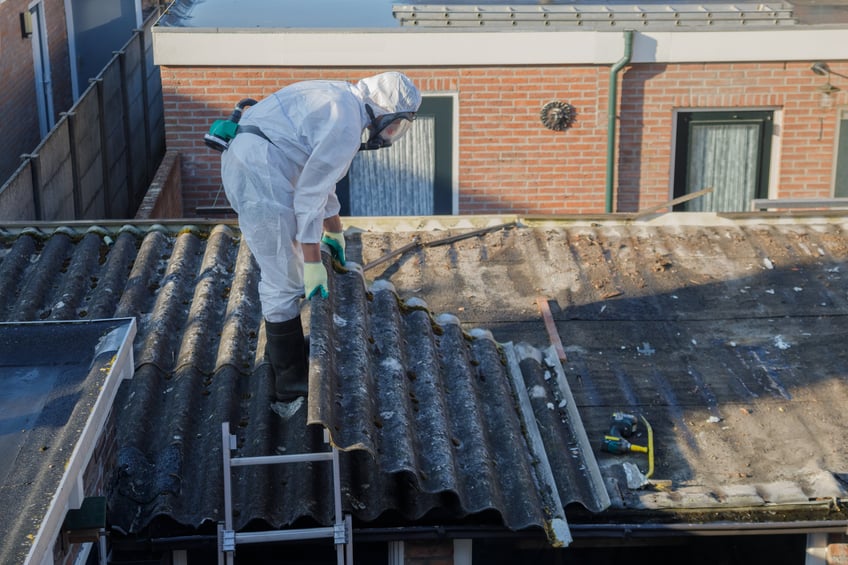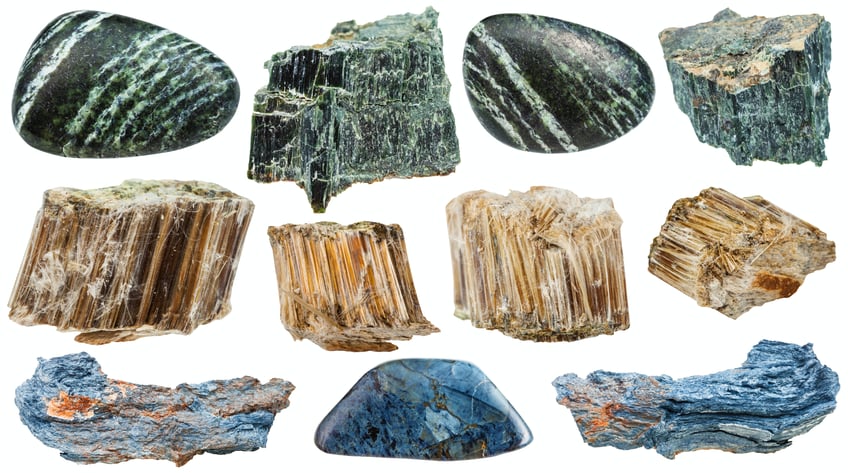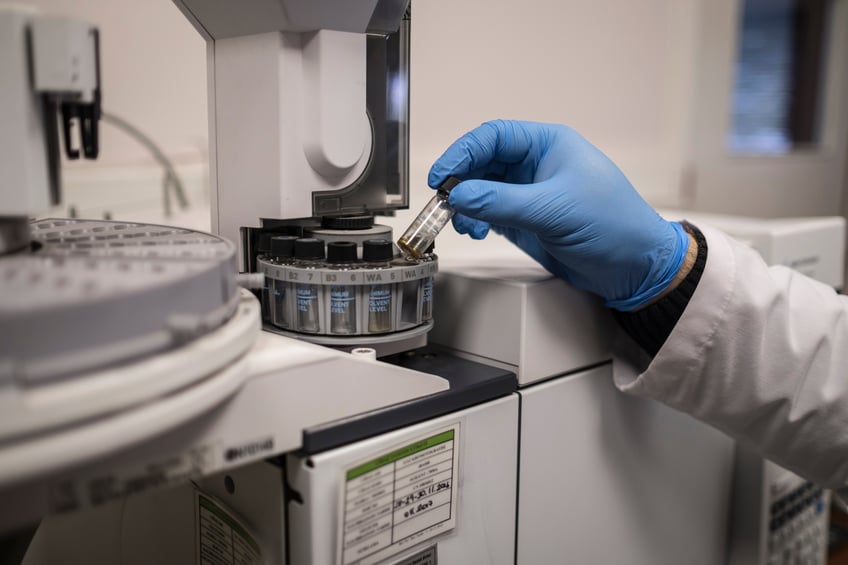Asbestos refers to a group of six fibrous minerals which are naturally occurring and are comprised of very thin, pin-like fibres. It is mined from natural deposits in the earth and then processed and developed into a range of industrial materials. Previously used extensively as a building material, it provided strength and fireproofing to materials and is also an excellent electrical insulator and is highly resistant to heat.
Asbestos removalist quotes near you
Despite these qualities, exposure to asbestos is known to cause several cancers and diseases, leading to it being banned in over 50 countries (with Australia enforcing a ban on December 31st 2003). Although asbestos was not used in domestic building materials since the 1980s, many buildings that pre-date that timeframe contain asbestos. This has given rise to a significant market for the removal of hazardous material.

Do-it-yourself asbestos removal is not recommended and is actually illegal in some states and territories. For example, in the ACT, any work requiring the removal of asbestos must be undertaken by a licensed professional. In other states and territories, the removal of non-firable asbestos by an unlicensed person is permitted, provided the area is no bigger than 10m2.
The History of Asbestos
In other parts of the world, asbestos has been used since prehistoric times, and was popular in construction since the 1800s. But it exploded in Australia in the 1930s and peaked in the 1970s. Asbestos was mostly used as construction material mixed with cement and was the predominant building material between 1940-1960. 90% of all homes built before 1990 in Australia have asbestos in them. Asbestosis – a health effect of breathing in asbestos fibres – was first discovered and diagnosed in 1946.
In 1951 safe asbestos dust levels were set and in 1966 the Wittenoon asbestos mine was closed after 26 workers died of asbestosis and related illnesses such as mesothelioma and lung cancer. In 1970 building unions began action to ban asbestos use and in 2003 it was banned in Australia. However, asbestos-related illness still contributes to 4000 deaths in Australia a year and illegally imported asbestos is still used in some buildings.
What are the types of Asbestos?
There are two main types of asbestos:- Chrysotile (AKA ‘white’) asbestos
- Amphibole asbestos
Chrysotile asbestos is most commonly used in construction because of its spiral structure, which makes it more durable than the straight-aligned fibres of amphibole asbestos. Asbestos can be further broken down in construction as friable – or non-bonded – asbestos, or non-friable – or bonded – asbestos. Friable asbestos was used in objects you might consider fragile, such as paper products, vinyl sheets, patching compounds, fire blankets and sprayed insulation.
Dry, friable asbestos can be easily powdered and therefore dangerous. Non-friable asbestos is asbestos mixed into cement, used for roofing, ceiling and flooring. Non-friable asbestos is harder to break down and thus should be lower on your removal priorities than friable asbestos.

The Dangers of Asbestos
Since asbestos contains silicon, it is toxic to humans. Friable asbestos can be easily powdered and thus inhaled, giving people asbestosis or scarred lung tissue. It can also cause lung cancer and ‘mesothelioma’ – another form of cancer.
Cost Considerations for Asbestos Removal
The cost of removing asbestos from a property can vary, depending on the complexity of the job. There are a number of factors that will impact a removal quote, including:- Access to the material: if the affected area is impeded by structures or obstacles that make reaching and working with the material difficult.
- The type of asbestos: different forms of asbestos require varied techniques of removal. Large chunks are easier to eradicate than loose dust, which would incur additional cost due to it being more labour intensive.
- The location on the property: if the asbestos is located externally on a building or house (for example the eaves of a roof), it is a simpler job than internal work. There is a risk of contaminating interiors such as carpets or bedding when working inside, which requires greater preparation and care.
- The volume of asbestos: this will dictate the scope of the work and the hours required, which is a major determinant of the quote.
Other considerations that might affect the cost are the distance required to travel to undertake the work and the height and gradient of the roof (if applicable). Removal specialists can also have other services conducted at an extra cost (such as asbestos testing, analysis, site inspections and demolitions).
How Much Does Asbestos Removal Cost?
The cost of removing asbestos from a property can vary, depending on the complexity of the job. There are a number of factors that will impact a removal quote, including:- Access to the material: if the affected area is impeded by structures or obstacles that make reaching and working with the material difficult.
- The type of asbestos: different forms of asbestos require varied techniques of removal. Large chunks are easier to eradicate than loose dust, which would incur additional cost due to it being more labour intensive.
- The location on the property: if the asbestos is located externally on a building or house (for example the eaves of a roof), it is a simpler job than internal work. There is a risk of contaminating interiors such as carpets or bedding when working inside, which requires greater preparation and care.
- The volume of asbestos: this will dictate the scope of the work and the hours required, which is a major determinant of the quote.
- Roofing: $28 - $60 per square metre (sqm)
- Fencing: $25 - $50 per sqm
- Ceilings: $40 - $100 per sqm
- Sheds: $80 per sqm
- Flooring: $20 per sqm
- Flooring with adhesive vinyl covering: $90 - $100 per sqm
- Soil: $190 per tonne
How much does Asbestos Removal Cost in Australia?
At a state and territory level, the average costs are as follows:- New South Wales: $35 per sqm (the approximate national average)
- Victoria: $25 per sqm
- Australian Capital Territory: $30 per sqm
- Western Australia: $48.50 per sqm
- Queensland: $30 per sqm
- South Australia: $75 per sqm
- Northern Territory: $30 per sqm
- Tasmania: $30 per sqm
How much does an asbestos inspection cost?

Hiring a licenced surveyor to test your material for asbestos can cost anywhere from $90-$2000, with an average sitting at around $520. This can depend on how the tests are being done; a physical sample generally costs $250-$750, whereas an air sample averages at $400-$1200. Offsite testing costs around $50 per material tested if not needed urgently, but $80 if needed in the next 24 hours. Dust samples cost around $225-$1200. If results come back positive, hiring an inspector to assess which parts of your building need to be removed costs around $400-$1000 . Find asbestos surveyors and inspectors on iSeekplant today
Looking for asbestos removal contractors?
Get a quote for asbestos removal in your area. Use iseekplant’s ‘get a quote’ tool here. Alternatively, call us on 1300 691 912 or email us at projects@iseekplant.com.au. Browse our asbestos removal contractors here.
Keep on top of all the latest industry and project news by subscribing now to iseekplant's Constructionsht blog!


